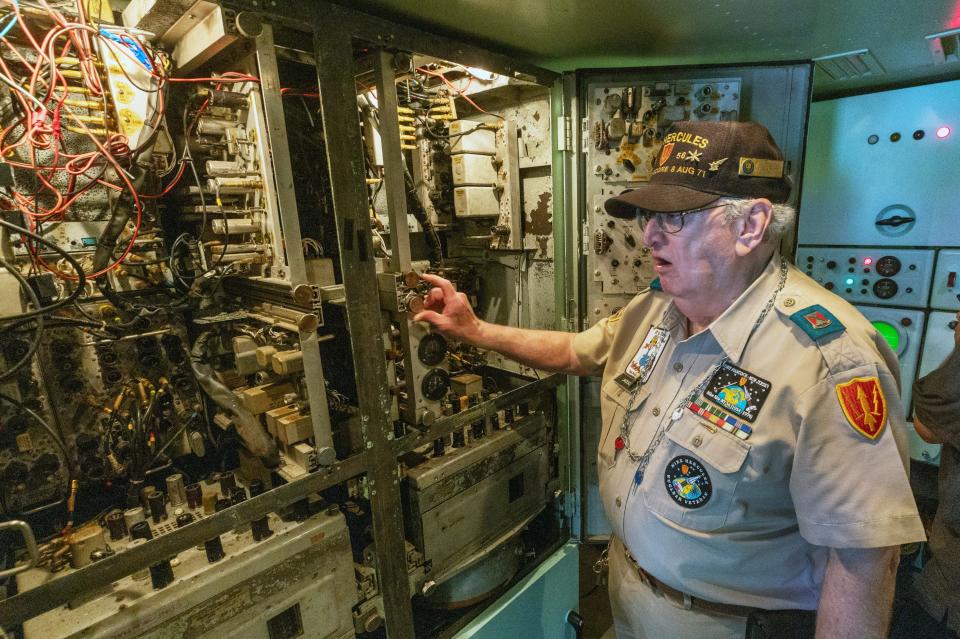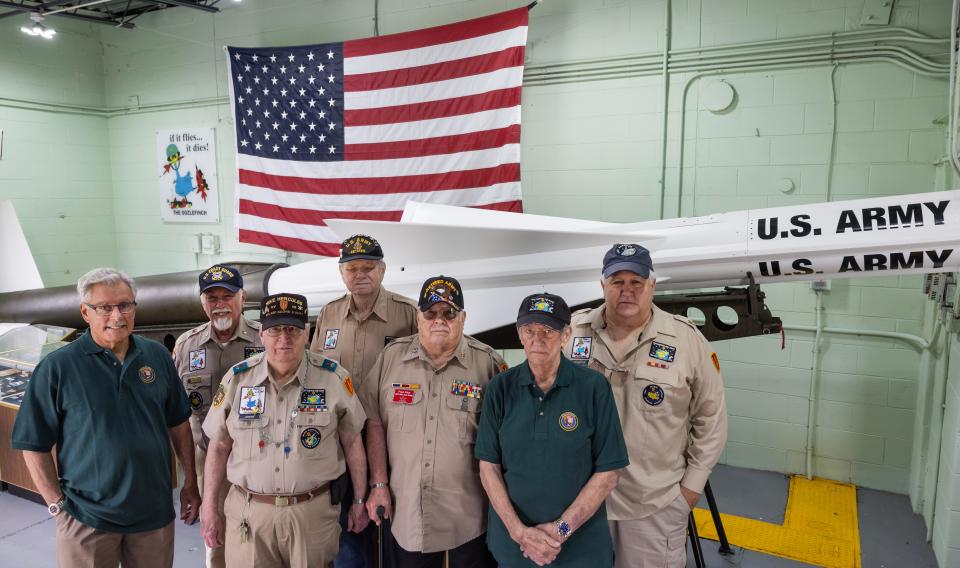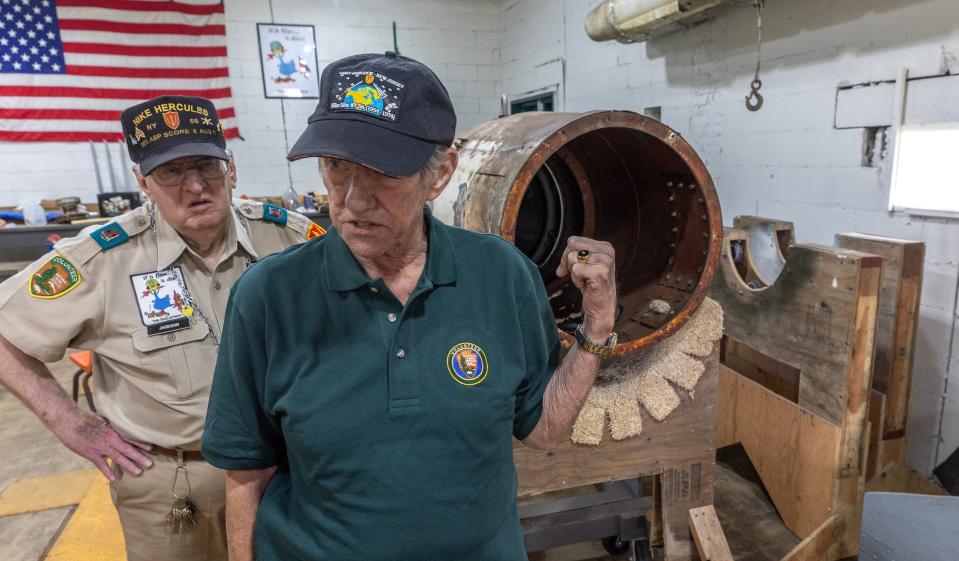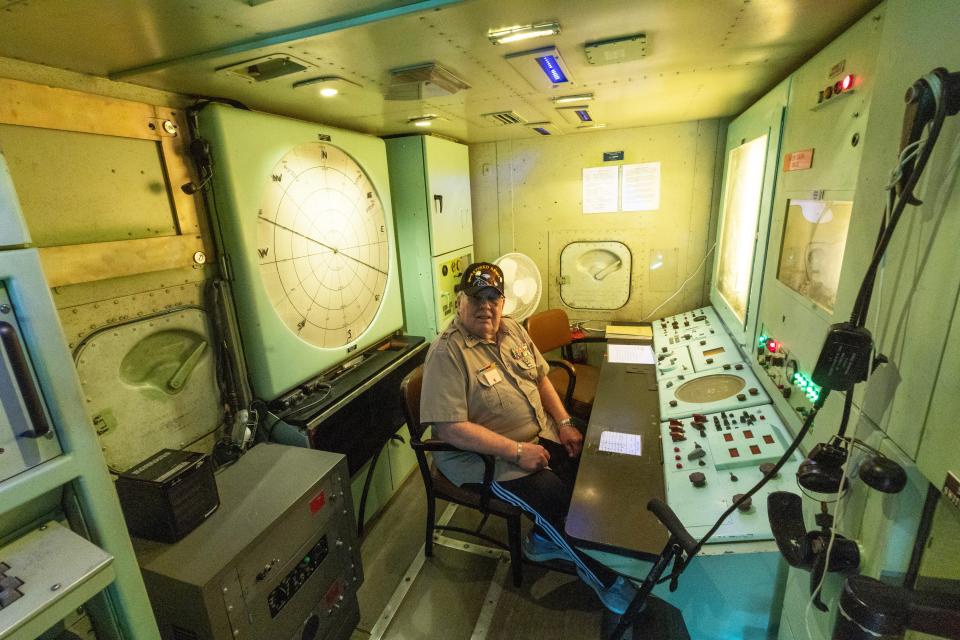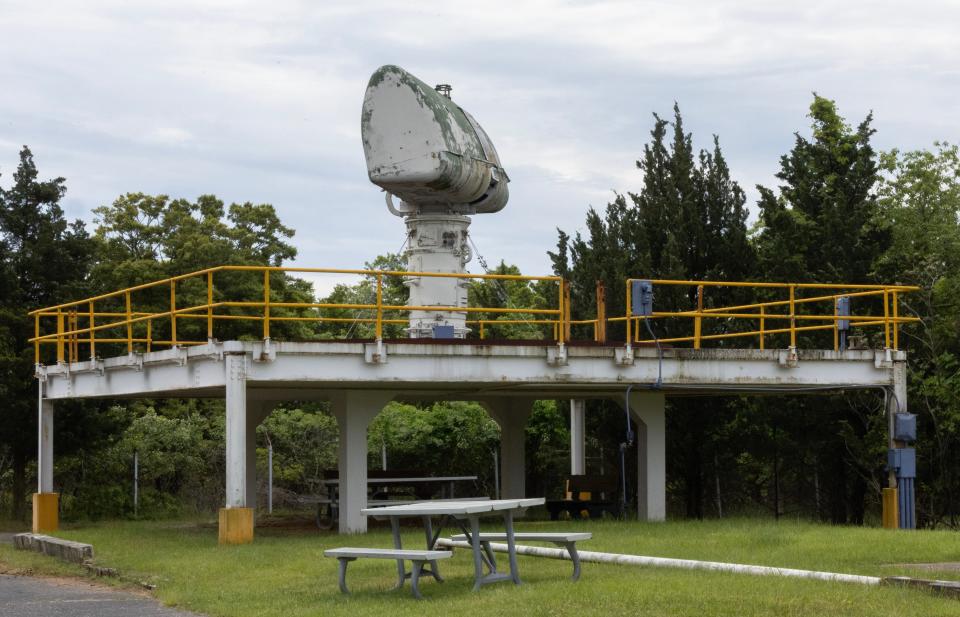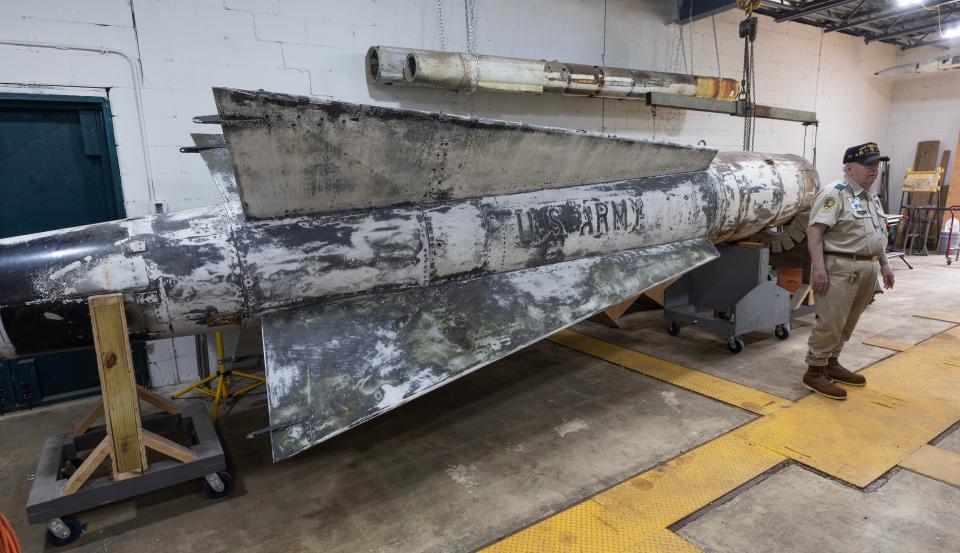SANDY HOOK - It was a typical day at work for Bill Jackson until an electric heater malfunctioned and a fire broke out.
But this wasn’t just any job, and it wasn’t just any fire.
It happened at the Nike missile site at Fort Hanco*ck, the U.S. Army base on the northern end of Sandy Hook. And Jackson’s task at that moment was to emergency-disarm the Hercules missiles that sat perilously close to the flames.
“The heater was shooting flames out just above the missiles,” the Asbury Park resident recalled. “We had to get that fire out in a hurry.”
Fort Hanco*ck: How Sandy Hook base protected New York City from being bombarded
This was in the late 1960s, about a decade after the chain-reaction explosion of eight Ajax missiles killed 10 men at the nearby Nike base in Middletown, so Jackson was acutely aware of the danger. The Hercules missile was bigger and nastier than the Ajax — and came equipped with nuclear warheads.
“During that period of time like most young men, I was young, dumb and felt indestructible,” said Jackson, now 77. “But there were a couple of times where I had the (crap) scared out of me.”
Like in the summer of 1970, when the alarm blared and all personnel got called to “battle stations” as a Soviet bomber entered U.S. airspace off the East Coast.
“The job was a lot of repetition and boredom, punctuated by periods of terror,” Jackson said.
It’s one thing to tell these fascinating Cold War stories. It’s another to show civilians the actual launch button, to sound the alarm for them, to walk them past the radar that tracked enemy targets, to invite them to pose for photos with an actual Ajax or Hercules missile.
Jackson and a bunch of fellow veterans have made all of that possible, keeping the Project Nike story alive 50 years after Fort Hanco*ck closed and the program was deactivated in 1974. Though there were once more than 250 Nike bases around the country, Fort Hanco*ck’s (known as Nike Missile Site NY-56) is one of the few the public can experience to this extent. Last month, Jackson and his nonprofit organization — the Fort Hanco*ck Nike Site NY-56 Volunteers Association — opened a museum next to Parking Lot L near Sandy Hook’s Horseshoe Cove Beach.
Sandy Hook Fort Hanco*ck Officers Row: Are these crumbling, stately homes doomed? Apartment plan in trouble
“People who come here are engrossed,” said Sal DiFede, an Air Force veteran who lives in Little Silver and volunteers with the nonprofit. “This is history — the threat was real.”
As tour guides, these veterans dive deep into that threat and its repercussions, from the engineering details to top-secret close calls to tragedies of the era (always important to remember, especially on Memorial Day).
“We could be ready to go to war in 15 minutes,” Jackson said. “This was the last line of defense against a surprise attack from the Soviet Union.”
'We got within five minutes of a launch'
Occasionally, when a longtime Bayshore resident tours the site, there will be questions about the disaster on May 22, 1958.
That’s when eight fully armed Ajax missiles at the Nike base in the Chapel Hillsection of Middletown blew up “in a furious mushroom of fire and death,” as the Associated Press reported. The accident killed 10 men— six soldiers and four civilian contractors. It actually could have been worse; one missile nearly landed in abackyard three-quarters of a mile away, falling just a stone’s throw shy of a home-lined street.
Jackson said contractors were performing maintenance modifications on the arming system of the missiles.
“They were hurrying so they could get it done and punch out without incurring overtime,” he said. “They had all the missiles out and lined up — and they were going from one missile to the next, making this modification. Part of the modification required drilling into the missile.”
'It shouldn't be forgotten': Middletown fireman who died in Nike missile explosion honored
He added, “While we don’t know exactly what happened because the missiles were destroyed and the people, they were pretty much shredded, one of the theories is as they were drilling in, the man who was drilling hit a detonation cord, which detonated that missile, which in turn detonated all the other missiles.”
The tragedy changed Nike procedures “radically,” said Jackson, who worked at Fort Hanco*ck’s Nike base from 1968-1972.
“After that you would never bring more than one missile up at a time to perform a maintenance modification,” he said. “You literally went by the book. One man would read the step, and another man would perform the step. No one was allowed to rely on their memory.”
The U.S. Air Defense early warning system was dangerous business. In 1960 a helium tank’s explosion caused a fire in a nuclear-tippedBOMARC missile in Plumsted, causing radioactive contamination. In 1961, Texas Tower 4, a radar station off the coast of Long Beach Island, sank during a nor’easter, killing all 28 men who worked there.
Keeping memories alive: Mystery man who honored pilot killed in Pine Barrens fighter jet crash comes forward
The stakes were highest with the introduction of the Hercules, a 41-foot, 10,000-pound missile that reached a sound barrier-puncturing speed of Mach 2 by the time it left the launchpad. Hercules’ range was 100 miles with an altitude up to 150,000 feet. In the summer of 1970 at Fort Hanco*ck there were 24 of them armed with nuclear warheads, the largest of which was 40 kilotons — nearly three times the power of the bomb that leveled Nagasaki in World War II.
The point of going nuclear, Jackson said, was that the missile didn’t have to hit the exact target to take it out. Just detonating “in the neighborhood” could fell an approaching enemy bomber, or an entire fleet of them.
As the Soviet bomber approached that summer day, Jackson said, “we got within five minutes of a launch. We had 16 missiles topside, all still horizontal. Ready to elevate, we were told ‘hold fire, hold fire!’”
Air Force jets “were able to get him turned back toward the Soviet Union,” Jackson said. As the jets escorted the rogue bomber east, “we stayed (at battle stations) for an hour to make sure he didn’t come back.”
Finally the order came to “stand down” and “do not talk about this to anyone.”
The brush with calamity never appeared in the press.
Bayshore battles: From World War to Cold War in Highlands
A herculean effort
With the blessing of the National Park Service, which maintains Sandy Hook and Fort Hanco*ck’s remnants, Jackson began giving tours of the Nike site two decades ago. Over time he recruited fellow veteran volunteers to help him. In 2012 Superstorm Sandy ransacked the peninsula, rendering the launch pad inaccessible, but Jackson and his cohorts painstakingly restored the Integrated Fire Control Area that served as the nerve center.
They acquired a first-generation Nike Ajax missile from Picatinny Arsenal in Morris County, where it had been rusting away outside, and spent nearly 1,000 hours refurbishing it. Today it gleams white as the museum’s centerpiece — 34 feet long, including rocket booster, it sports a 12-inch diameter and weighs 2,400 pounds. Its guidance system is removed and on display nearby, along with a protective suit used by soldiers during the fueling process.
Visitors also can walk through the nearby control room, which still lights up as it did during that close encounter of 1970. That’s next to the workshop where the veterans are restoring the second-generation Hercules they garnered with much effort from the New Jersey National Guard.
Memorial Day: Remember this Freehold 21-year-old helicopter pilot who vanished in Vietnam
“We’ve had this for six years,” said Richard “Dusty” Griffith, a Little Silver resident and master machinist who is leading the restoration. “It was in bad shape.”
The hope is it will be ready for display within two years. Griffith also has plans to get one of the site’s three radars rotating again.
All of this is a herculean effort, so to speak, by an incredibly dedicated group of retirees whose last mission is to keep this chapter of American military history alive. They fund it almost entirely through donations, with some material help from the National Park Service.
“We need more volunteers. We’re going to need younger people to give the tours in the future,” Jackson said. “I would love to be able to pass on the knowledge that we have.”
For more information about the Fort Hanco*ck Nike Site NY-56 Volunteers Association, their free tours, getting involved or making donations, visit www.ny56nike.weebly.com, find them on Facebook (Ft. Hanco*ck Nike Association) or email president Bill Jackson at wajnike@gmail.com.
Jerry Carino is community columnist for the Asbury Park Press, focusing on the Jersey Shore’s interesting people, inspiring stories and pressing issues. Contact him atjcarino@gannettnj.com.
This article originally appeared on Asbury Park Press: Nike missile museum at Sandy Hook Fort Hanco*ck revives Cold War danger
